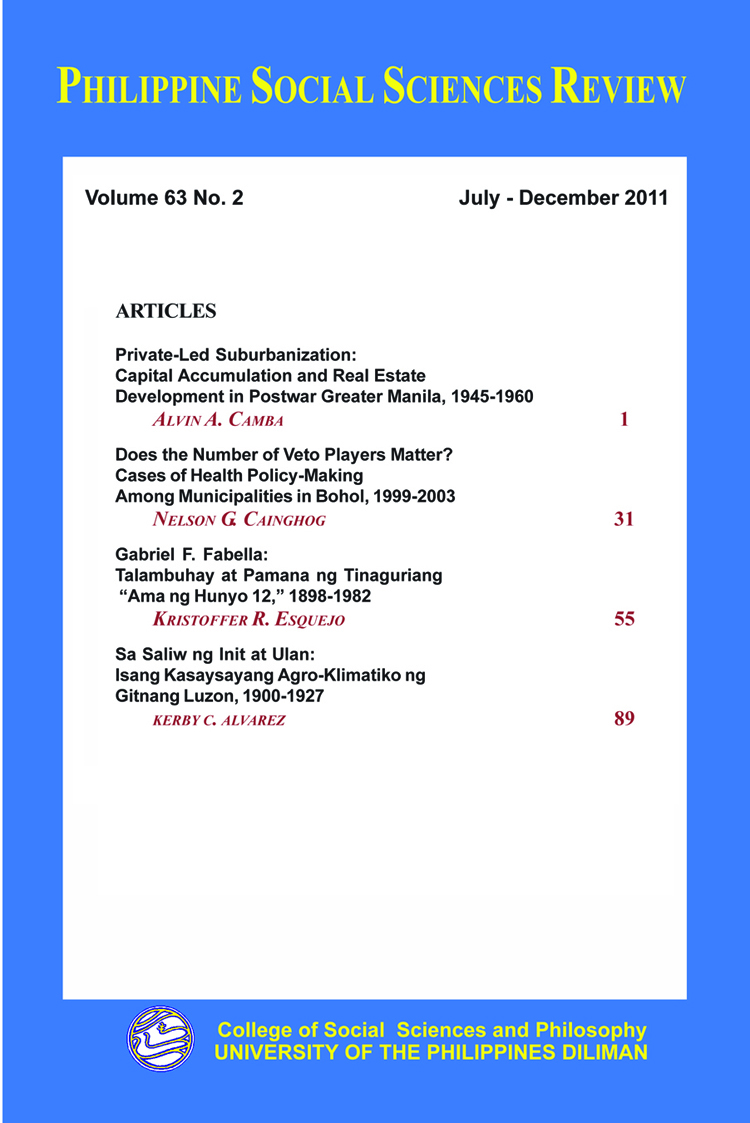Does the Number of Veto Players Matter? Cases of Health Policy-Making Among Municipalities in Bohol, 1999-2003
Abstract
Literature on veto player approaches in decision making is increasing in the field of comparative politics. Applying this approach to local government decision making in the Philippines, the study hypothesizes that given structural constraints, local politicians from opposing factions would block policies that could enhance the electability of the faction in power, a condition of high party polarisation. Thus following Tsebelis (2002) veto players’ theory, it is expected that systems with more than two veto players would have difficulty effecting policy change. The study uses a discrete-time event history model in examining the timing of Sentrong Sigla certification among selected municipal health centres in Bohol augmented by a comparative case study using loosely the most similar systems design. The analysis highlights historical health expenditures and the dimensions of capacity proposed by Hilderbrand and Grindle (1995). The study found out that systems with two-veto players are more likely to have SS certification with an odds ratio of around 3.0. The result implies that the system, in general, does not tend to exhibit high party polarisation and only has healthy competition that tends towards responsiveness. In the case studies, aside from formal veto players, local bureaucrats could also “veto” policy proposals especially in the area of health.
Published
2012-10-11
Section
Articles
Keywords
Health Policy


